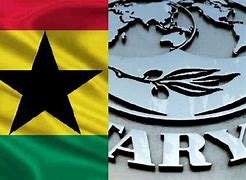ESLA proceeds amounted to GHS1,344.2 million and was 29.1 percent below the target of GHS1,896.7 million as demand for petroleum products fell short of expectation during the period under review, according to the BoG financial sector report.
Cumulatively, over the first half of the year, proceeds from the levy fell short of target by 28.1%, reaching GHS1.15 billion (against GHS1.61 billion target). This reflects an abysmal performance of the ESLA levy this year, despite the rebound in economic activities as restrictions in petroleum consuming sectors have so far been eased.
When compared with 2020 figures over the first seven months, this represents a 5% decline (GHS1,415.49 million in 2020). This is quite surprising as demand for petroleum products also declined during the previous year due to mobility restrictions imposed by the government to contain the spread of the Covid-19 virus.
Given this worrying trend, this means that the government’s 12% increase per annum projection for the ESLA proceeds for the periods 2021-2024 may end this year on a weak footing, derailing or delaying the expected payments of debt and energy sector projects.
Govt’s forecast for 2021 likely to derail
The 2021 forecast is expected to reach GHS5.3 billion compared with the 2020 forecast of GHS4.4 billion. Thus, the projection for 2021 is estimated to increase by GH¢ 634.77 million (12.0 percent) and consequently expected to rise to GHS7.43 billion in 2024.
With a projected amount of GHS5.3 billion, this means that on average, more than GHS440 million worth of ESLA proceeds must be collected monthly to reach the targeted amount at year-end 2021. Yet, for example, in July 2021, ESLA proceeds amounted to roughly GHS190 million.
Meanwhile, legacy debt in the energy sector is not showing signs of decline but continues to skyrocket. Estimated at $2.8 billion in 2020, legacy debt in the sector risks growing to $12.5 billion by 2023.
Dr Yusif Sulemana, a petroleum expert is cited to have said that “typically, it is just due to our poor handling of the taxation regime for petroleum products… without those taxes/levies last year even with COVID, the government was able to meet the ESLA target…
“That just shows that the taxes that [the government] added into the energy sector levies were simply burdensome to the consumers.”
Dr Sulemana, Petroleum expert
Government’s expectations are that the positive growth forecast from 2021-2024 will impact on the operations of the energy sector. However, the sector’s challenges are compounding by the day, and not meeting its target for the year raises serious debt settlement issues.
The data presented by the Bank of Ghana indicated the pollution and sanitation levy imposed by the government, as part of the new levies this year, accrued GHS73.89 million. Proceeds from the Delta fund also accumulated 158.09 million during the first seven months of the year.
Also, the BoG noted that the Debt Recovery levy/ Energy Fund Levy amounted to GHS2,675.65 million over the period, representing an 18.9% growth year-on-year.
The government’s debt-to-GDP ratio as at end-July 2021 stood at 76.4%. Experiencing revenue shortfalls of this magnitude raises concerns of the sustainability of the country’s debt which the energy sector contributes a huge part.
As the government prepares to present the 2022 budget, the existing levies/taxes on petroleum products must be reviewed to reduce the burden on petroleum consumers so as to increase demand for petroleum products and hence raise ESLA proceeds in line with forecast.
READ ALSO: Tullow set to sink $150 million into increasing stakes in Jubilee and TEN fields offshore























